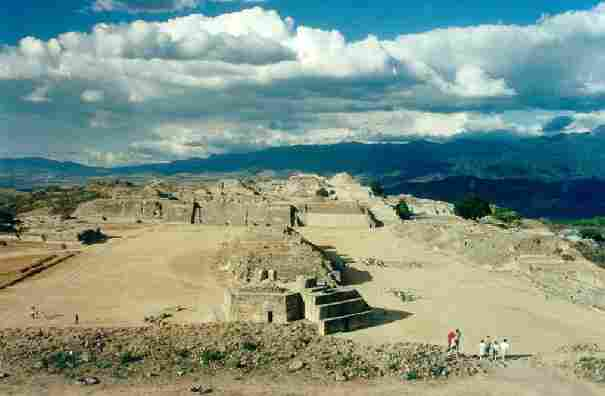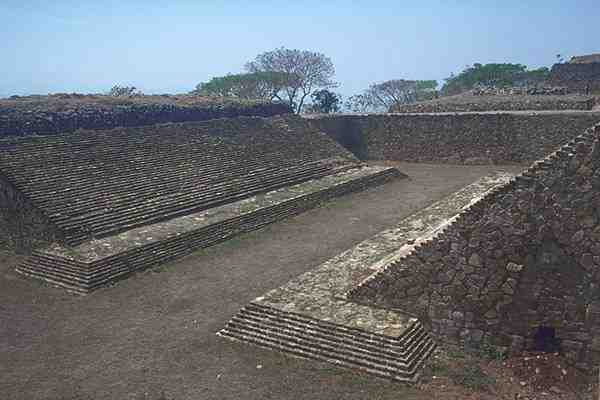The city of Monte Alban covered an area of 20 square kilometers of high land located at the junction of the Atoyac and Salado river valleys. The high land is completely surrounded by the valley area. The principal excavations have revealed the primary ceremonial area at the center of the city where the builders sculpted the mountain itself to create a big flat plaza area surrounded by temples and residences.

This is the area you can visit. It is estimated that only a few percent of the entire city has been excavated, and you can still see extensive terracing on the surrounding hills, with remains of other stone built structures on top.
Monte Alban was the ancient capital of the Zapotecs and one of the first cities in Mesoamerica. During it's epoch, it was also one of the most populated cities in the world.

It was founded approximately 500 years BC, when the Zapotecs left their previous capital at San Jose Mogote in Etla valley, and the city flourished until about 750 AD, when the city was abandonned by the Zapotecs who built a new capital at Zaachila in the Zimatlan valley. Around 1300-1400 AD, Monta Alban was briefly re-occupied by the Mixtec people who left great treasures in tomb 7 when they re-used it to bury a Mixtec king.
The city of Monte Alban exercised political, economic, and ideological control over the other communities and surrounding mountains. Its principal constructions include the Great Plaza, the Ball Court, System II, The carved stone Danzantes (Dancers), Building J, Central Buildings G and H, the Northern Platform and the Palace, the Southern Platform and its pyramid, System 7 Deer, and Tomb Number 7 of the Great Plaza.
The Ball Court

is located to the left of the entrance to the Great Plaza. The ballgame (juego de pelota) was played throughout ancient Meso America from the very earliest times. It appears to have been of great ceremonial importance, and plays a central role in the Mayan creation story, the Popol Vu. It was played in a stone built court (the earliest dated court is about 1500 BC), with little or no spectator accomodation, and was generally associated with one or more temples. You can see stone engravings of the ball players at the Dainzu site in the Mitla valley. The rules of the game are not well understood, but clearly varied with locality. A simple variant is still played at Etla, and trips to see a game and visit the village are organized by the Oaxaca Lending Library.
The court at Monte Alban is built in the typical I shape, with the central rectangle flanked by sloping walls, and containing a central flat stone which marked the start of the game. The court at Monte Alban does not however, have the great loops of stone high on the middle of the slanting walls which are found in other regions.
A sculpture representing a grasshopper covers most of the western side. The platform located on the western side also contains a stair case flanked by two alfardas that end in talud structures, with two stelae in the largest part; there are two small niches contained there.
You can see script, engraved on the stone of several stelae on the site. The script, which appears to be an early predecessor of the well-understood Mayan script, has not been deciphered with the exception of the numeral system which appears to be identical with that of the Maya peoples.
Attached to the museum at the site is a small restaurant on a terrace overlooking the city of Oaxaca, all three valleys, and across the valley, a distant view of San Felipe below the 10,500 ft. summit of La Pena de San Felipe. After seeing the archaeological site, rest here with a drink and enjoy the magnificent scenery.
Hours: The museum and site are generally open from 10 am. to 8 pm., Monday to Sunday. Entry is about 30 pesos, free on Sundays and holidays.